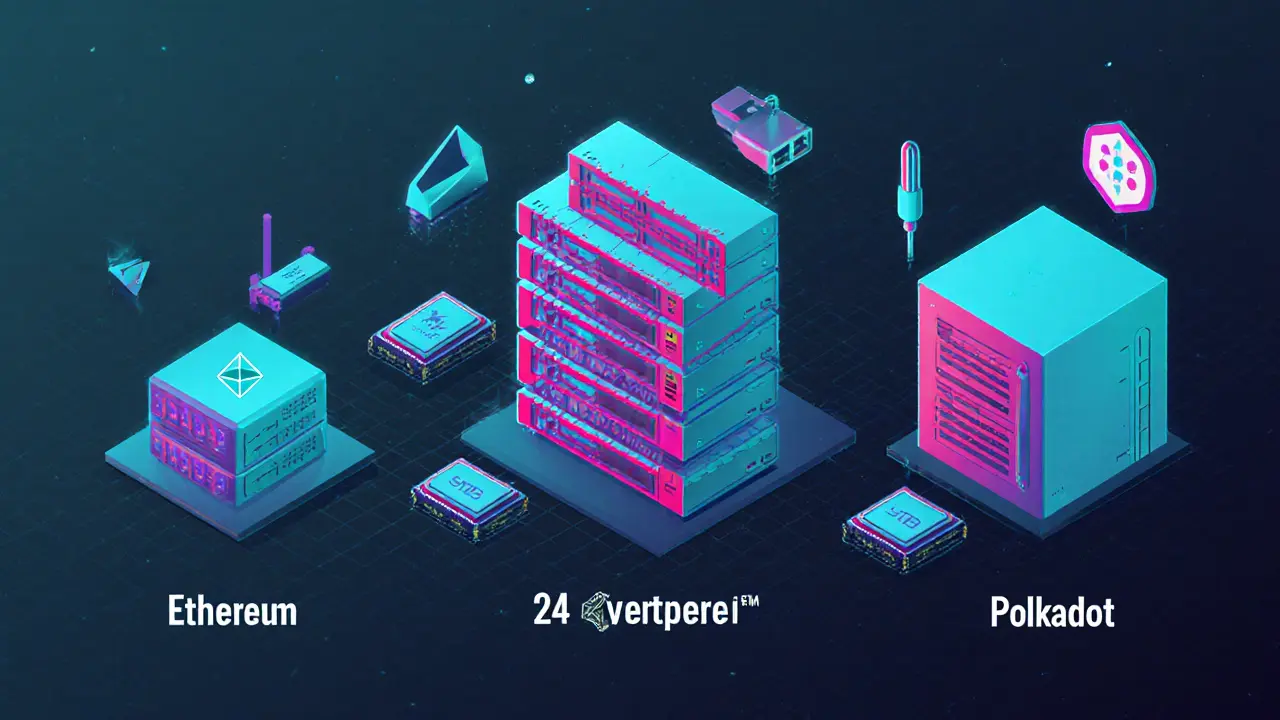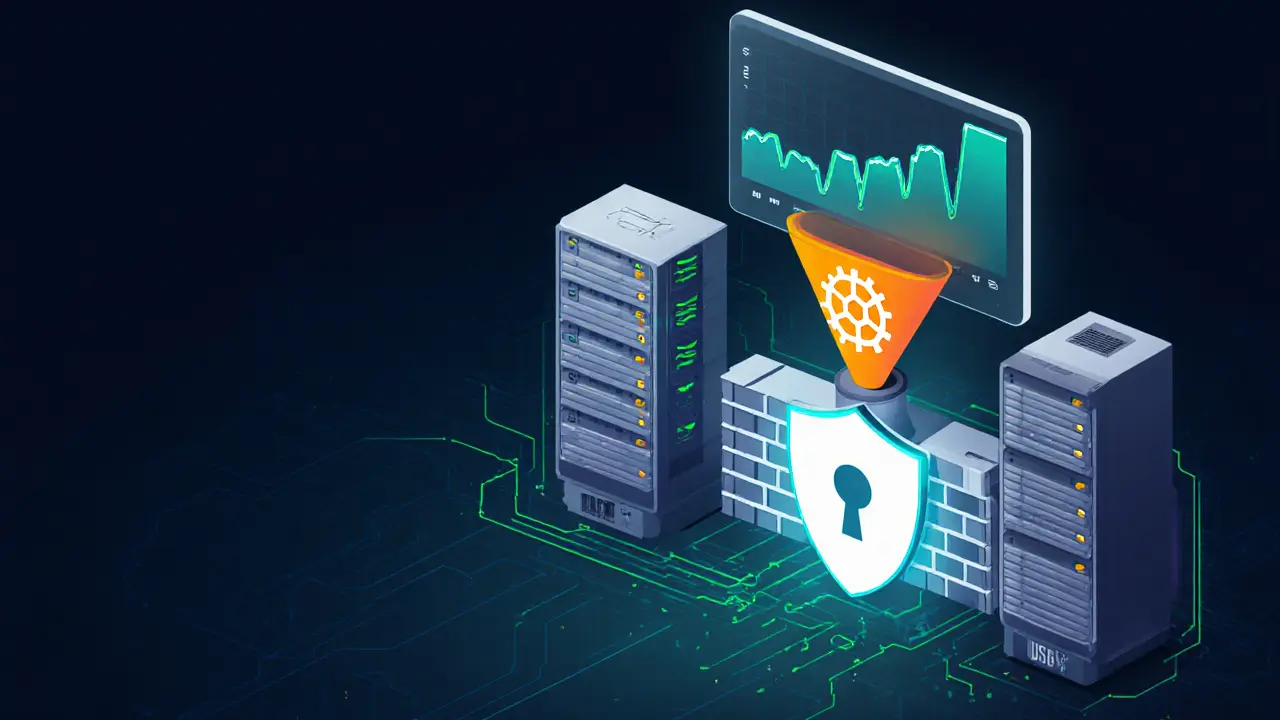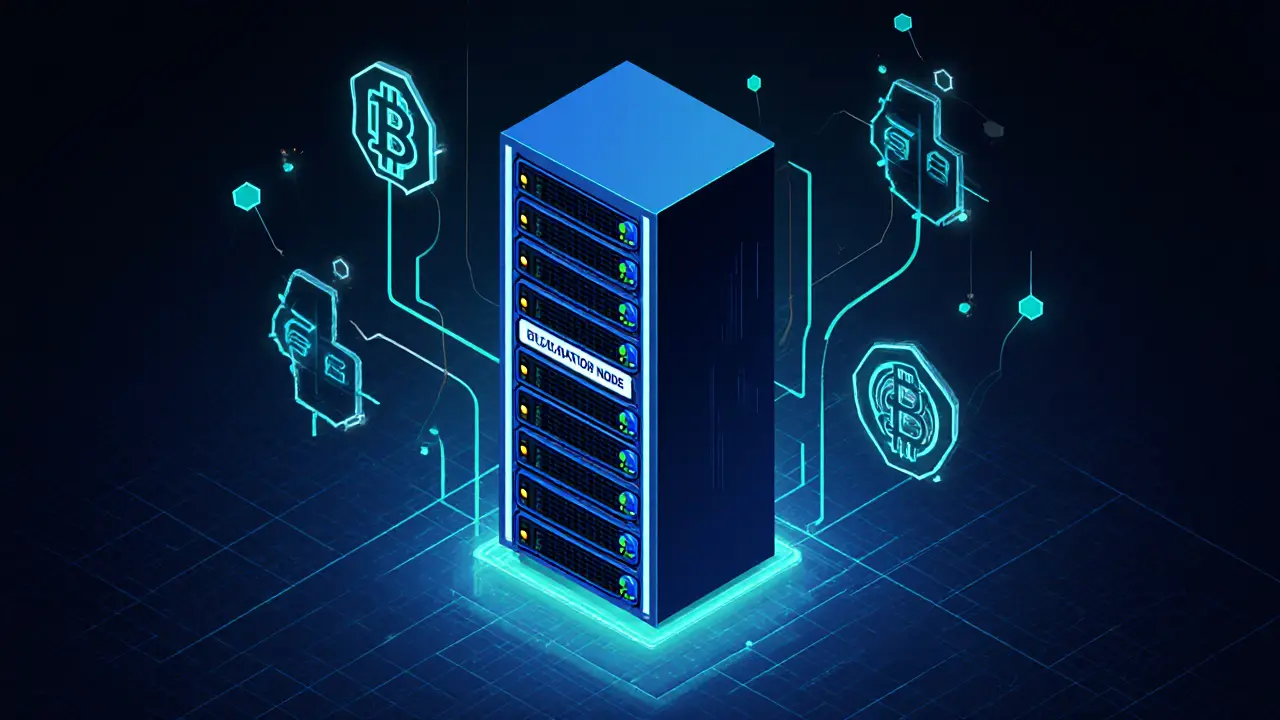Validator Node Hardware Requirements Calculator
Your Server Specifications
Network Requirements
Compare your hardware against popular blockchain networks
Results
Enter your server specifications and click "Calculate Requirements" to see if you meet minimum requirements for each network.
Key Takeaways
- Validator nodes keep blockchains running by confirming transactions and sealing new blocks.
- Hardware needs range from a modest 4‑core server (Ethereum) to enterprise‑grade rigs (Solana).
- Staking capital varies wildly - from zero on some networks to millions of tokens on others.
- Security basics - static IP, firewalls, UPS, and key backups - protect you from slashing.
- A step‑by‑step checklist lets you go from raw server to live validator in days, not weeks.
When you decide to run a Validator node a server that participates in a blockchain’s consensus process by validating transactions, proposing blocks, and earning staking rewards, you’re joining the backbone of a decentralized network. If you’re ready to launch a validator node, this guide walks you through everything you need - from the nuts‑and‑bolts hardware checklist to the money you’ll have to lock up on popular chains.
What a Validator Node Actually Does
At its core, a validator node is a computer that runs the official client software for a given blockchain. The node receives pending transactions, runs them through the network’s consensus algorithm (Proof of Stake, DPoS, PoA, etc.), and either signs off on a new block or rejects malformed data. In Proof‑of‑Stake systems, every block a validator signs earns a slice of the staking rewards; miss a block or act maliciously, and the protocol may slash a portion of your staked tokens.
Core Technical Requirements
Even though each network has its own specifications, most validator setups converge on four resource groups: CPU, memory, storage, and networking. Below is a quick reference you can copy into a spreadsheet.
- CPU: Multi‑core, high single‑thread performance. Most chains recommend ≥3.0 GHz per core; Solana pushes for 24+ cores with AVX2/AES‑NI extensions.
- Memory: DDR4 is still common, but DDR5 (5600 MHz+) is becoming a must for high‑throughput networks.
- Storage: NVMe SSDs for low latency; systems like TON also demand 64 k+ IOPS.
- Network: Stable, low‑latency connection. Minimum 10 Mbps for Ethereum, but 1 Gbps+ for Solana and TON.
- Power: Uninterruptible Power Supply (UPS) to avoid downtime and potential slashing.
Financial Staking Requirements Across Major Chains
Staking capital is the second gatekeeper after hardware. Here’s a snapshot of the latest numbers (October 2025):
- Ethereum: 32 ETH per validator (≈ $55,000 at current price).
- Solana: No minimum; you can stake any amount, but competitive rewards favor > 50 SOL.
- Polkadot: No fixed minimum, yet top‑180 validators hold roughly 33,000 ATOM collectively.
- TON (The Open Network): 101 TON tokens slashed for missed blocks; initial stake often > 5,000 TON.
- TRON: 27,000 TRX for a regular validator; Super Representatives need ≥ 2 M TRX.
- Avalanche: 2,500 AVAX (delegation possible from 25 AVAX).
- Sui: 30 million SUI - effectively enterprise‑only.
Keep in mind that token prices swing dramatically; always convert to fiat equivalents before locking funds.

Step‑by‑Step Setup Checklist
- Choose Your Network. Decide whether you want to start with a low‑barrier chain (e.g., Cosmos) or a high‑reward, high‑cost chain (Ethereum).
- Provision Hardware. Grab a server that meets the minimum specs listed above. For beginners, a 4‑core, 32 GB RAM, 2 TB NVMe box on a reliable colocation provider works for most chains.
- Install OS. Use a minimal Linux distro - Ubuntu 22.04 LTS or Debian 12 are safe bets. Harden the OS: disable root SSH login, enable automatic security updates.
- Sync the Full Node. Download the official client (e.g., geth for Ethereum, solana-validator for Solana). Run it in “full sync” mode and let it download the entire chain - this can take anywhere from 12 hours (Polkadot) to 48 hours (Solana).
- Generate Validator Keys. Follow the network‑specific key generation tool. Store the private keys on an air‑gapped USB drive and keep a backup in a sealed vault.
- Configure Networking. Open the required inbound UDP/TCP ports (Ethereum: 30303, Solana: 8000‑8003). Assign a static public IP or use a reliable dynamic DNS service coupled with port forwarding.
- Set Up Monitoring. Install Prometheus + Grafana dashboards provided by the client repo. Alerts for missed slots, high CPU, or low disk space can save you from slashing.
- Stake Your Tokens. Use the official wallet or a trusted staking interface to bond the required amount. Verify the transaction on‑chain before proceeding.
- Launch the Validator Service. Start the validator daemon with flags that specify your key files, RPC endpoints, and any performance tweaks (e.g., enabling hardware acceleration on Solana).
- Maintain & Upgrade. Keep the node client up to date with hard‑fork releases. Periodically test your UPS runtime and replace aging SSDs.
Following this checklist, most operators can go from zero to live validator in 2-5 days, depending on chain sync speed.
Security Best Practices to Avoid Slashing
Slashing isn’t just a theoretical risk; a single missed block can wipe out a sizable chunk of your stake. Here’s a practical security plan:
- Run a firewall that only permits inbound connections on the validator ports.
- Keep a hot‑standby secondary server behind a load balancer; if the primary drops, the backup can take over within seconds.
- Enable ECC (Error‑Correcting Code) RAM - especially crucial for Solana’s massive memory footprint.
- Regularly snapshot the blockchain data directory so you can recover from disk corruption without re‑syncing from scratch.
- Rotate your validator signing keys annually and store old keys offline.
Hardware Comparison Across Popular Networks
| Network | CPU | RAM | Storage | Network |
|---|---|---|---|---|
| Ethereum | Quad‑core x64/ARM64, 3.0 GHz+ | 32 GB DDR4 | 4 TB NVMe SSD | 10 Mbps minimum, no caps |
| Solana | 24+ cores (AMD EPYC 9434 / Intel Xeon Gold), 4.0 GHz+ | 384 GB DDR5 ECC (512 GB‑1 TB recommended) | Enterprise SSD, 3 TB+ | 3 Gbps symmetric, <50 ms latency |
| Polkadot | 4‑core x86‑64, 3.4 GHz | 32 GB DDR4 | 1 TB NVMe SSD | 500 Mbps stable |
| TON | 16‑core, 3.2 GHz+ | 128 GB DDR4 | 1 TB NVMe SSD, 64k+ IOPS | 1 Gbps, 100 TB/month traffic |
| TRON (Super Rep) | 32‑core, 3.0 GHz+ | 128 GB DDR4 | 2.5 TB NVMe SSD | 1 Gbps+ |

Common Pitfalls & Pro Tips
Pitfall #1: Ignoring IOPS. Chains like TON treat storage speed as a first‑class citizen. Use enterprise‑grade NVMe drives with guaranteed 64k+ IOPS to keep block propagation fast.
Pitfall #2: Under‑estimating Latency. Even if you have 10 Gbps bandwidth, high ping can cause missed slots on Solana. Choose a data center within the same region as the majority of peers.
Pro Tip: Deploy a lightweight monitoring script that pings the closest peer every 10 seconds. If latency spikes above 30 ms, trigger an automatic fail‑over to the hot‑standby node.
Scaling: Running Multiple Validators
Once you’ve mastered a single validator, you can diversify risk by running nodes on several chains. The key is to isolate resources: give each validator its own VM or physical host, separate firewall rules, and distinct key management vaults. Cloud providers now offer “validator‑as‑a‑service” bundles that bundle GPU‑accelerated compute for Solana and high‑throughput networking for TON - a cost‑effective way to scale without buying new racks.
Next Steps & Troubleshooting
- If your node is lagging: Check disk I/O stats (iostat) and network jitter. Upgrade to a higher‑performance SSD or switch to a lower‑latency ISP.
- If you get slashed: Review the validator’s logs for missed slots and verify your uptime monitor. Most slashing events are due to brief power outages - add a larger UPS or a redundant power feed.
- Staking rewards look low? Compare your effective commission rate against network averages and consider delegating a portion of your stake to a higher‑performing peer.
Running a validator node is a blend of solid hardware, disciplined security, and a clear understanding of each chain’s economics. Follow the checklist, stay on top of updates, and you’ll turn your setup into a reliable revenue stream.
Frequently Asked Questions
What is the minimum hardware I need for an Ethereum validator?
A 4‑core x64/ARM64 CPU, 32 GB DDR4 RAM, a 4 TB NVMe SSD, and at least a 10 Mbps uncapped internet connection are enough to run a stable Ethereum validator.
Do I need to lock up the full 32 ETH to become an Ethereum validator?
Yes. The protocol requires exactly 32 ETH per validator. You can’t start with a smaller amount unless you join a staking pool, which delegates your stake to a larger validator.
Which blockchain has the lowest entry barrier for new validators?
Chains like Solana and Cosmos have no hard minimum stake, so you can begin with a modest amount of tokens. However, Solana’s hardware demands are the toughest, while Cosmos is easier on both hardware and capital.
How can I protect my validator keys from theft?
Generate keys on an air‑gapped machine, store the private file on an encrypted USB drive, and keep a sealed backup in a safe deposit box. Never expose the raw key on a machine connected to the internet.
What monitoring tools are recommended for validators?
Prometheus paired with Grafana dashboards is the de‑facto standard. Most client repositories ship ready‑made Grafana panels that display block latency, CPU usage, and sync status.


1 Responses
Thank you for sharing this comprehensive validator guide; it really demystifies a complex topic. I appreciate how you broke down the hardware requirements into clear categories, making it easier for newcomers to understand what they need. The checklist format is particularly helpful, as it provides a concrete roadmap from server provisioning to live operation. Your inclusion of both technical specs and financial staking thresholds gives a balanced view of the commitment required. I especially liked the emphasis on security best practices, such as firewalls and UPS backups, which can prevent costly slashing events. The step‑by‑step sync process acknowledges the time variance between different networks, setting realistic expectations. Providing a table that compares CPU, RAM, storage, and network needs across chains is a valuable reference tool. It’s also good to see the mention of static IPs and port forwarding, which are often overlooked by beginners. The advice to store validator keys offline and keep sealed backups reinforces a strong security posture. I would add that regular key rotation, perhaps annually, can further reduce risk. Monitoring with Prometheus and Grafana is an excellent suggestion; alerts can catch issues before they become critical. The guide’s tone remains encouraging throughout, which helps keep readers motivated during the often tedious sync phases. Overall, this guide serves as a solid foundation for anyone considering becoming a validator, and I look forward to seeing more detailed tutorials on specific chain configurations.